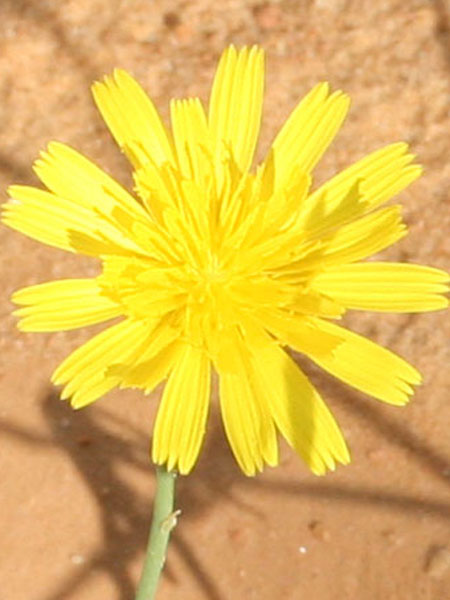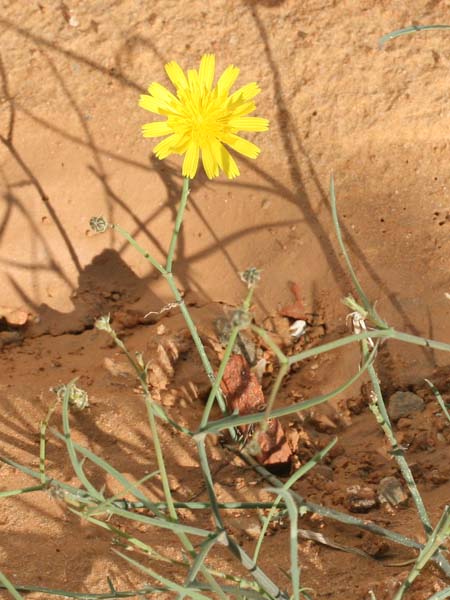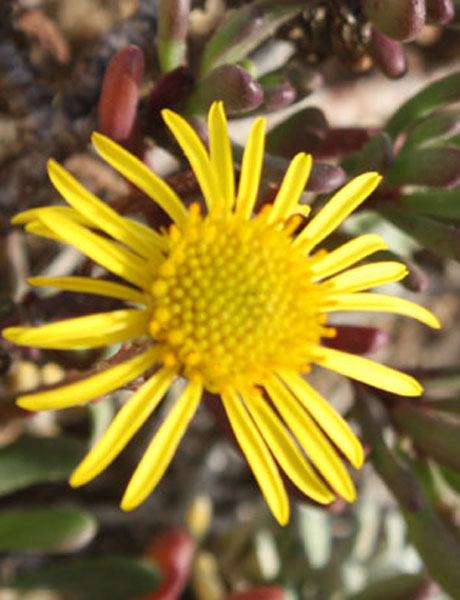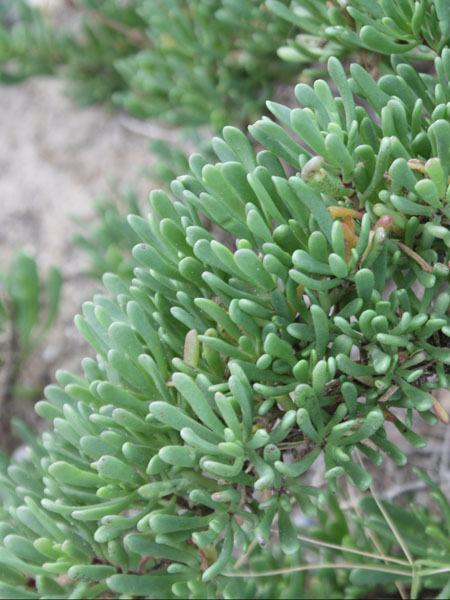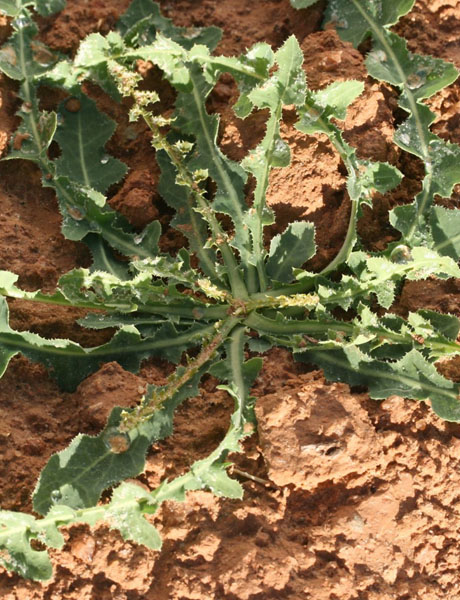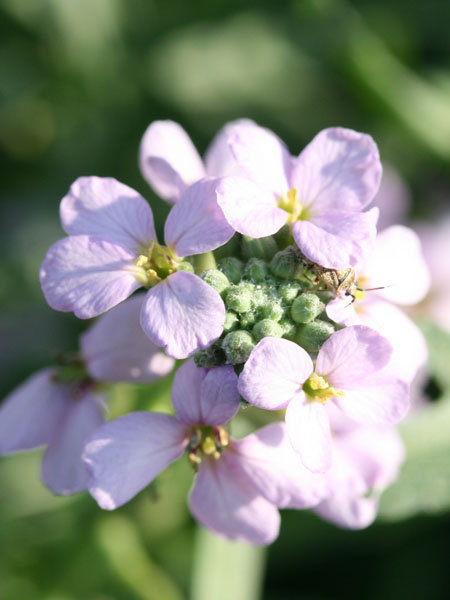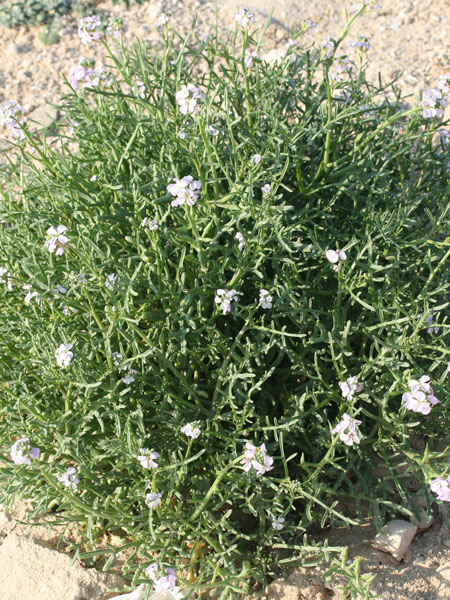Achillea maritima
Kingdom : Plantae / النّباتات
Division : Spermaphyta / البذريات
Clade : Magnoliophyta or Angiospermae / مستورات البذور
Class : Eudicotyledoneae / ذات الفلقتين
Order : Asterales / رتبة النّجميات
Family : Asteraceae [Compositae] / الفصيلة النجميّة أو المركّبة
Genus : Achillea
species : maritima
Chromosomes: 2n=18
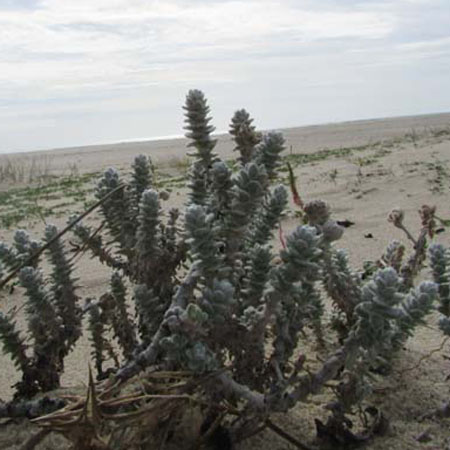
Protologue
(L.) Ehrend. & Y.P. Guo in Willdenowia 35: 50 (2005)
Synonyms
Filago maritima (L.), Sp. Pl., ed. 1, 927 (1753). Athanasia maritima (L.), Sp. Pl., ed. 2, 1182 (1763). Diotis maritima (L.) Desf., Tab. Ecole Bot. 99 (1804). Otanthus maritimus (L.) Hoffmanns. & Link, Fl. Portug. 2: 365 (1834).
Common names
Tunisia Arabic English French Tamazight
قيصوم بحري
القطن البري
Lavender cotton
Cottonweed
Diotis blanc
Diotis cotonneux
Diotis laineux
Santoline-cyprès
Othanthe maritime
Toxic
no
Edible
no
Latex
no
Botanic description
Genus description
"Flower Head heterogamous radiations.Few ligules in short limb. Tubular, hermaphroditic, fertile tubular flowers, compressed and winged corolla tube. Small capitula in highbush. Involucre campanulate with interbreeding bracts. Flat or slightly convex receptacle garnished with glitter. Achenes compressed back and forth, narrowly margined and bald. Penned leaves.
Species description
"
Scented plant gray-green to almost cottony white of sandy littoral. The new Shoots in tight clumps are fully covered with a thick white tomentum (cotton).
Stems lying down at the base then ascending,have many small single or ramous leaves. Leaves many small sessile, oblong, obtuse, entire or dentate a little fleshy Flowers all tubular and hermaphroditic, yellow corolla with winged-compressed tube, embracing the ovary by two basilar ears Inflorescence capitulates pea-sized, in single cedar or compound Fruits ovoid achene compressed without crest
Botanic References
Pottier-Alapetite G. (1981). Flore de la Tunisie Angiospermes –Dicotylédones (Gamopétales première partie). Imprimerie Officielle de la République Tunisienne (Eds), 995 p. Edouard LE FLOC’H, Loutfy BOULOS et Errol VELA. (2010). Catalogue synonymique commenté de la FLORE DE TUNISIE. République Tunisienne, Ministère de l’Environnement et du développement durable, Banque Nationale de Gènes. 500 p www.theplantlist.org
Biology
Life form Perennial Type form Hemicryptophyte Photosynthesis C3
Phenology
Blooming
JanuaryFebruaryMarchAprilMayJuneJulyAugustSeptemberOctoberNovemberDecember
Fruiting
JanuaryFebruaryMarchAprilMayJuneJulyAugustSeptemberOctoberNovemberDecember
Map Localization
Ecology
Adaptation Xerophyte species thanks to its important hair that protects it from heat. It grows on sandy soil in coastal areas and on the seashore. It is an unusual plant that should be protected. Salt bladder yes Invasive no
Geographical distribution
Localization Biocimatic stage Annuel pluviometry (mm) GPS Cap Bon ( Tazeka, Fév. 2016 ) Superior semi-arid 425 36°32'20.89"N / 10°50'55.20"E Bizerte ( Rimel, Déc.2014 ) Lower humid - sub-humid 637 37°15'29.68"N / 9°54'11.74"E
General uses
The dry plant is traditionally used as decoration and at the same time as a way of repelling insects.
Medicinal uses
"It has anti-fungal and anti-inflammatory activities.In addition, a significant range of products with biological and pharmacological activities is used in the treatment of dysentery and bladder inflammation.
NOTE : This website is not that of herbal medicine and assumes no responsibility for the negative effects of the use of plants. Seek advice from a professional before using a medicinal plant.
Systems / Organs / Effects
Digestive System Urinary System Antiinflammatory
Test results
TPC DPPH ABTS+ FRAP Year mg GAE g-1 MS CI50 g ml-1 CI50 g ml-1 CE50 g ml-1 21,48± 0,65 31,78± 0,64 49,50± 0,26 289,56± 5,86 Merchaoui H. et al. 2019 Total Phenols content(TPC), Anti-radical potentialities against (DPPH, ABTS), Ferric reducing antioxidant power(FRAP)
Molecules : ADN / Proteins
Chromosomes : 18 Uniprot NCBI
Chemical composition
Name Terpene Essentiel oils
Phenolic compounds Polyphenols
Essentiel oil chrysanthenone
filifolone
cis-chrysantenyl acetate
α-pinene
Tunisian references
Other references
Christodoulopoulou L, Tsoukatou M, Tziveleka LA, Vagias C, Petrakis PV, Roussis V(2005). Piperidinyl amides with insecticidal activity from the maritime plant Otanthus maritimus. Journal of Agricultural and Food Chemistry. 53, 1435–1439. Muselli A, Rossi PG, Desjobert JM, Bernardini AF, Berti L, Costa J. Chemical composition and antibacterial activity of Otanthus maritimus (L.) Hoffmanns. & Link essential oils from Corsica. Flavour Frag. J. 2007; 22, 217–223.






















